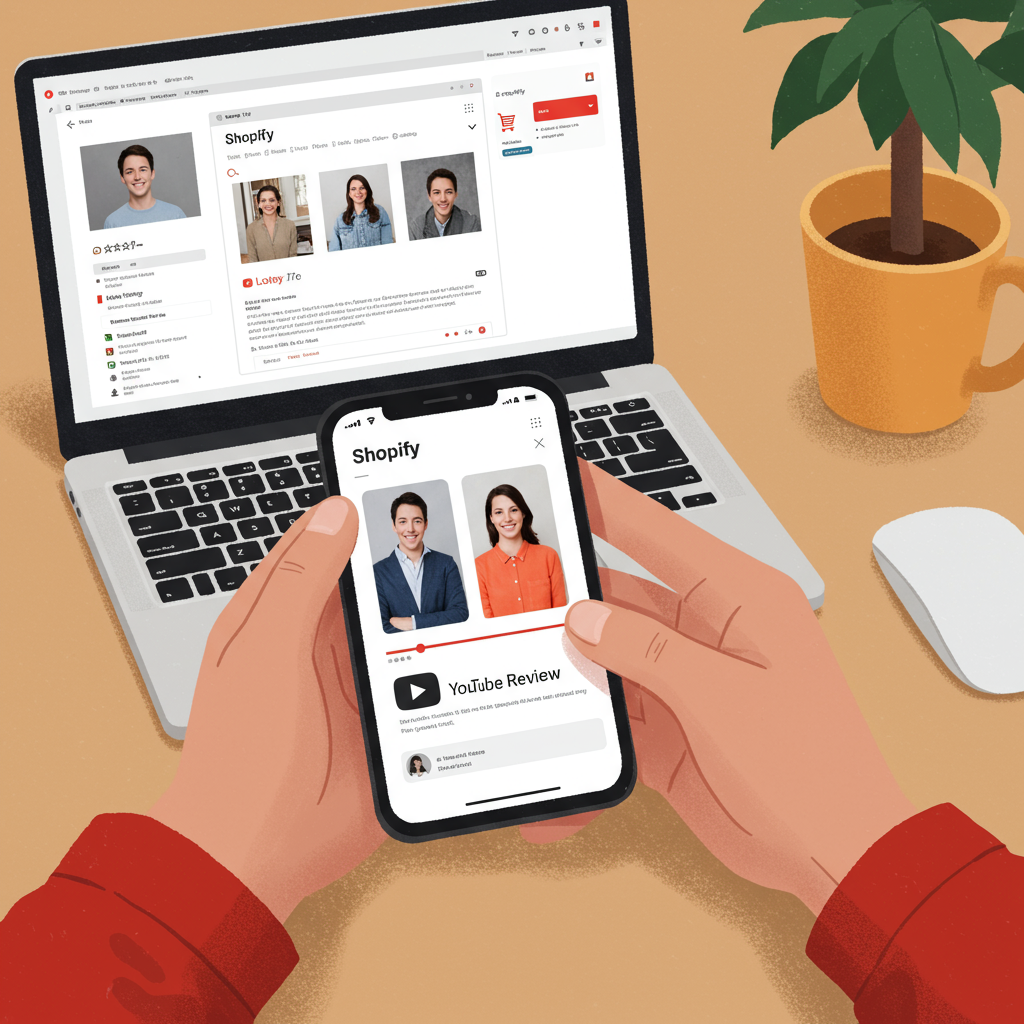Discover how I’ve leveraged the power of YouTube creators to boost sales and brand visibility for my e-commerce business.
As a Shopify merchant, I’m constantly looking for innovative ways to reach new customers and grow my brand.
One strategy that has consistently delivered impressive results for me is collaborating with YouTube influencers.
It’s a powerful channel, and I want to share my insights on how you can effectively use it to promote your own store.
YouTube isn’t just a platform for entertainment; it’s a massive search engine and a hub for highly engaged communities.
People turn to YouTube for product reviews, tutorials, unboxings, and recommendations before making purchasing decisions.
This makes it an incredibly fertile ground for e-commerce businesses like ours.
The beauty of influencer marketing on YouTube lies in the authenticity and trust that creators build with their audience.
When an influencer genuinely recommends your product, it carries far more weight than traditional advertising.
Their viewers see them as trusted friends or experts, making their endorsements incredibly persuasive.
So, how do you get started? My first step is always about finding the *right* influencers.
It’s not just about follower count; it’s about relevance to your niche and audience demographics.
I look for creators whose content aligns perfectly with my products and whose audience would genuinely be interested in what I sell.
Tools like Social Blade, or even just manual searching on YouTube, can help you identify potential partners.
Pay close attention to their engagement rates – comments, likes, and shares are often more telling than subscriber numbers alone.
An influencer with 50,000 engaged subscribers can often outperform one with 500,000 disengaged ones.
Once I’ve identified potential partners, I consider the type of collaboration that would work best.
Product reviews are a classic: the influencer showcases your product, discusses its features, and shares their honest opinion.
Unboxing videos are also highly effective, creating excitement and giving viewers a tangible look at your product experience.
Sponsored videos, where your product is the main focus, allow for deeper dives and more comprehensive demonstrations.
I’ve also had success with integrated mentions, where the influencer naturally incorporates my product into their regular content, like a ‘favorites’ video or a ‘get ready with me’ segment.
Tutorials or ‘how-to’ videos are fantastic if your product requires some explanation or demonstrates a specific use case.
Giveaways and contests are excellent for generating buzz and quickly growing your email list, often requiring participants to visit your Shopify store.
Affiliate marketing, where influencers earn a commission on sales generated through their unique link, is a performance-based option I often explore.
When reaching out, I always make my pitch personalized and professional.
I clearly explain who I am, what my Shopify store offers, and why I believe their audience would love my products.
I highlight the value proposition for them – whether it’s a free product, a flat fee, or a commission structure.
Negotiation is key. Be prepared to discuss payment models. Some prefer a flat fee per video, others a commission, and sometimes a hybrid approach works best.
Always ensure you have a clear agreement or contract outlining deliverables, timelines, payment terms, and disclosure requirements.
For Shopify merchants, tracking is paramount. I use unique discount codes for each influencer to easily attribute sales.
I also leverage UTM parameters in the links they share, allowing me to track traffic sources directly in my Shopify analytics and Google Analytics.
Providing influencers with high-quality product images, key talking points, and clear calls to action helps them create the best content.
During the campaign, I maintain open communication, answering any questions they might have and ensuring they have everything they need.
After the video goes live, I closely monitor the performance – not just sales, but also website traffic, engagement on the video, and new social media followers.
Measuring ROI isn’t always straightforward, but I look at direct sales, brand awareness lift, and the value of the content itself (which can be repurposed).
Building long-term relationships with successful influencers is incredibly valuable; they become genuine advocates for your brand.
A common pitfall I’ve learned to avoid is focusing solely on follower count. Authenticity and audience engagement are far more important.
Another is not clearly communicating expectations. Ambiguity can lead to disappointing results.
Remember to comply with all disclosure guidelines, ensuring the influencer clearly states it’s a sponsored post.
Patience is also a virtue; some campaigns take time to gain traction, and not every collaboration will be a home run.
What do you think about this article? I’d love to hear your thoughts and experiences with influencer marketing.
In conclusion, YouTube influencer marketing offers a dynamic and effective way to connect with your target audience.
By carefully selecting partners, crafting compelling collaborations, and meticulously tracking your results, you can unlock significant growth for your Shopify store.
It’s an investment that, when done right, can yield substantial returns in both sales and brand loyalty.
I encourage you to explore this avenue and see the incredible potential it holds for your e-commerce journey.






